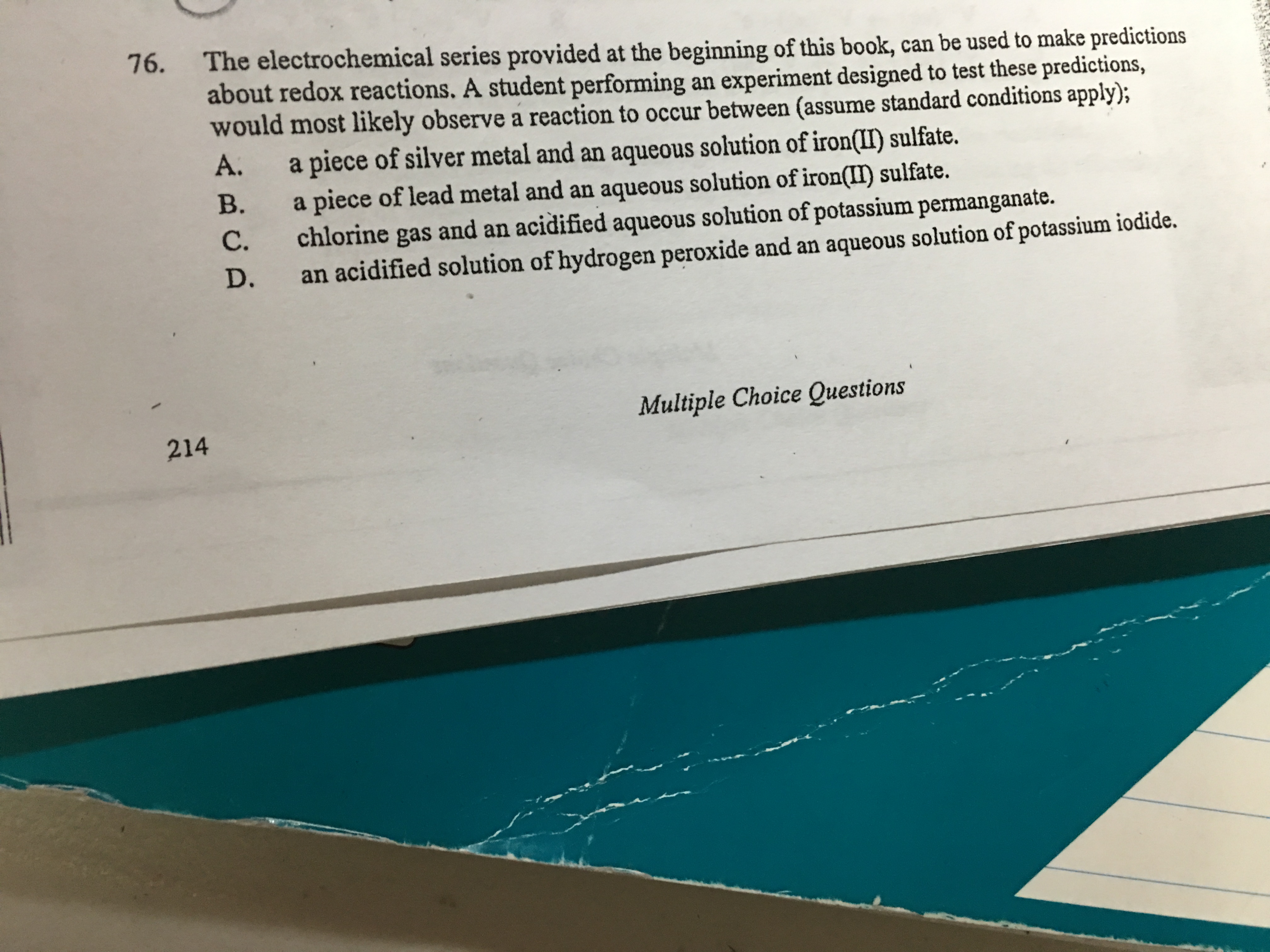Can you please explain, how a reaction is most likely to occur between (assume standard conditions apply) the following?

The link to electrochemical series http://www.vcaa.vic.edu.au/Documents/exams/chemistry/chemdata-w.pdf
page 4
The link to electrochemical series http://www.vcaa.vic.edu.au/Documents/exams/chemistry/chemdata-w.pdf
page 4
1 Answer
You need to set up the relevant electrochemical half-reactions from the provided Table.
Explanation:
Then, combine them (the metal oxidation and the ionic solution reduction) and see if the answer is positive or negative. A negative value indicates NO reaction is spontaneous. A positive value indicates that the reaction will proceed.
From the Table:
They both need to be set up in the real direction from the "Standard Table" direction (reduction) for the desired reaction:
For the "Standard Table" values the cell is calculated with the following formula:
This reaction will NOT proceed.
The same is true for the lead metal.
For C. the chlorine will be oxidized, and the Mn will be reduced.
For D. the peroxide oxygen will be reduced and the iodine will be oxidized.


